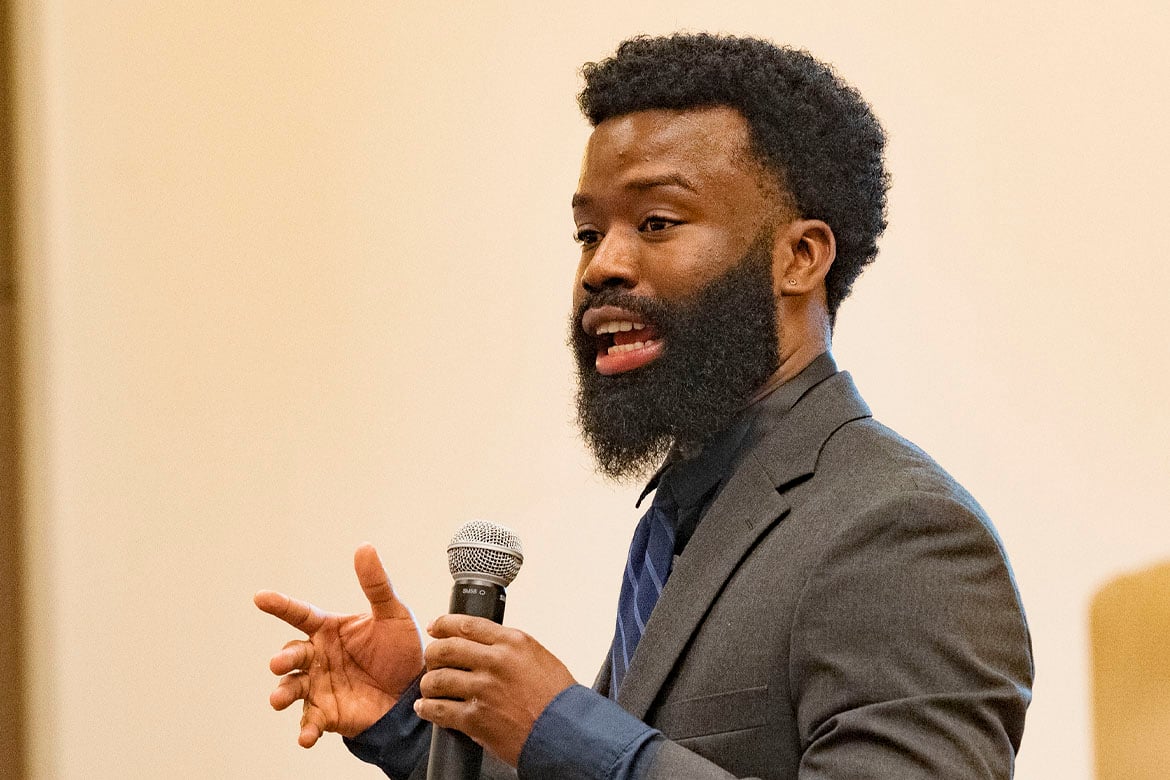For Theodore Lang, it started with identifying a need.
As a first-year medical student at the University of Chicago Pritzker School of Medicine in 2020, he realized that of the institution’s five medical student-run clinics, none directly served the Black adult population on Chicago’s South Side.
So Lang, now an M4, began having conversations with his peers, faculty, administration, and community stakeholders. In the beginning of his second year, he organized a team that led the initiative to create the Southside Free Clinic (SSFC), a medical student-run operation offering primary care medical services at no charge to patients.
That group benefitted from widespread support and has landed about $50,000 in grants to help the start of the clinic. In 2022, SSFC opened its doors one Sunday a month at the nondenominational New Beginnings Church in Chicago’s Woodlawn neighborhood, where about 80% of residents are Black.
Since it opened, the clinic has strengthened community partnerships and was awarded the top prize in the 2022 AMA Student Impact Challenge (PDF).
What does it take to get an ambitious, wide-ranging project off the ground as a medical student? Lang offered a few key tips on medical student leadership.
Do the legwork
It took almost two years for the clinic to go from an idea to an operating entity. In that time, Lang worked with faculty members who initially advised him to study the health profiles of the neighborhoods around the medical school to conduct a needs assessment and determine how the clinic could make the biggest impact.
From there, Lang teamed up with interested peers to form an executive board that could work with Project Helping Others Obtain Destiny (HOOD), a community organization founded by New Beginnings Church Pastor Corey Brooks, to understand the community’s needs and experiences with health care.
“It was a very important process to really think about this idea and talk to people to understand the need,” said Lang, an AMA member. “When you’re filling such a sizable gap, you need to get community members and patients on board. Our eventual goal is to get them into the health care system—some of our patients haven’t seen a doctor in years. But before that, you really need to understand the barriers and you do that by having these conversations.”
For medical students looking to hone their leadership skills, the AMA offers the chance to distinguish yourself through more than 1,000 leadership opportunities and skill building through online training modules, project-based learning and more.
Evolution is paramount
The SSFC’s initial vision was to serve patients by making a clinical impact. But in working with the community, Lang said the organization identified a gap in health literacy.
“We had a bare-bones model that involved signing patients up, seeing them at the clinic and offering services related to treating their medical condition,” Lang said. “We wanted to be primarily medical services, and we were going to help serve those patients. But working with our community partners ... we realized that we needed to expand beyond medical services. ... Our community partners highlighted the need for more resources on health education so members of the community could take control over their health with the knowledge they gained.”
In response, the clinic created a community health fair that featured several booths which altogether offered fact sheets, screenings, and free produce to community members.
Leading by listening
In reflecting on what it takes to lead as a medical student, Lang offered this advice: Listen first.
Doing so means that “you are able to be a leader people can trust because they’ll see that you are guided by their best interests. When you listen and make informed decisions based on what you hear, you are uniquely positioned to lead your team toward a pathway where everyone feels accounted for.”





